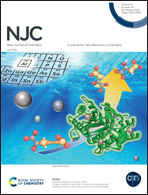Exploring indole derivatives as myeloid cell leukaemia-1 (Mcl-1) inhibitors with multi-QSAR approach: a novel hope in anti-cancer drug discovery†
Abstract
In humans, the over-expression of Mcl-1 protein causes different cancers and it is also responsible for cancer resistance to different cytotoxic agents. Thus, discovery of potential inhibitors of Mcl-1 is very important and both the pharmaceutical industry and academia are looking at it in the quest for new anticancer drugs. In the present study, different molecular modelling techniques such as recursive partitioning, Bayesian classification, structural and physico-chemical interpretation analysis and pharmacophore mapping were employed in order to identify the crucial structural fingerprints important for the optimization of 143 indole derivatives as Mcl-1 inhibitors. These modelling studies emphasize that hydrophobic naphthyl rings, methyl-substituted 1H-pyrazole moiety, N(1)-tethered morpholinoethyl group, chloro substitutions at the 6th position of indole nucleus etc. are beneficial for Mcl-1 binding. Finally, statistically validated classical QSAR and machine learning-based models were also developed for screening and prediction of different indole derivatives as Mcl-1 inhibitors. The modelling analyses will help medicinal chemists to design potent Mcl-1 inhibitors in future. Thus, the present study was an attempt to speed up the anticancer drug discovery of indole-based Mcl-1 inhibitors.



 Please wait while we load your content...
Please wait while we load your content...